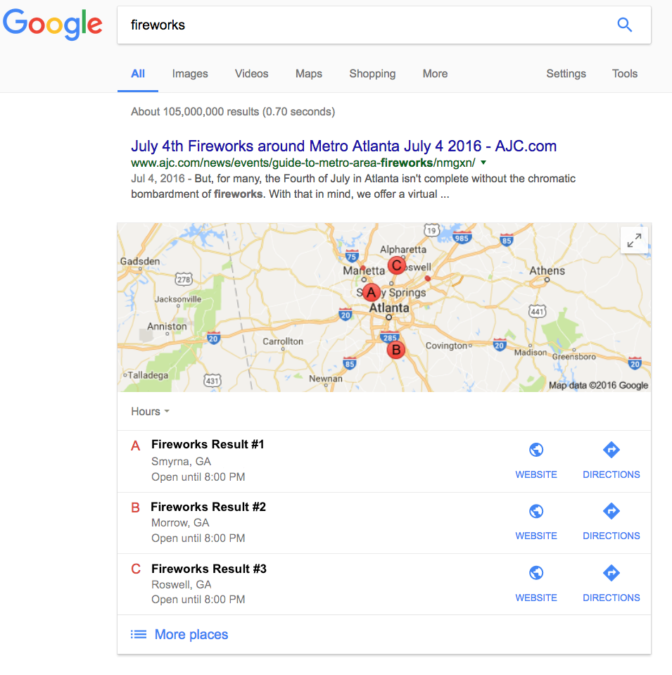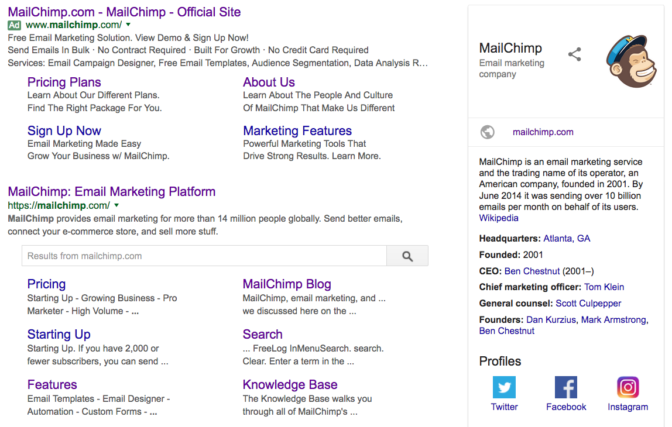Search engine optimization gets a bad rap. It’s not glamorous, but for small businesses, it can be an important way to get more traffic, grow your brand, and sell more stuff. Maybe you haven’t actively optimized your website for search engines. If so, this post is for you. Consider it a primer—a way to start getting familiar with SEO. We’ve actually just started working with this stuff ourselves, and the results have been fantastic. We’ll start with the basics, and then look to the future.
What is SEO?
In the simplest terms, SEO is a process used to increase traffic to your website through search engines like Google, Bing, or Yahoo. And, while it’s true that SEO has a lot to do with keywords (words or phrases commonly searched on the internet), the quality of the content you publish is actually much more important.
The salad days
In the mid-‘90s, as websites began to crowd the internet, primal search engines provided structure where there once had been none. Search platforms like Excite, Magellan, and WebCrawler modernized how information was organized. Results were based on basic HTML, keywords in the content, and “backend optimization.”
In those days, backend optimization wasn’t something that just anyone could declare as a skill. It was technical and reserved for professionals—a luxury that few site owners could afford. Developers (née IT guys) filled web pages with keywords that were invisible to the untrained eye, usually by cloaking content or simply filling the page with keyword-rich text that matched background colors.
A quarter-life crisis
By 1998, search engines like Google and Yahoo had joined the scene and dramatically improved the way online information was indexed and delivered. The initial algorithms used to rank websites were complex and slow moving though, and it could take months to identify and demote sites that utilized black hat SEO—aggressive techniques to increase their ranking on search engines. Google quickly realized that black hat SEO was affecting the average user, so they set out to find ways to connect people with more valuable content.
In 2000, they released Google Toolbar, a search bar that appeared at the top of a browser window, adding direct access to Google search from any website. With the Toolbar came PageRank data, a number between 1 and 10 that Google assigned to sites based on their keyword density, age and, eventually, inbound links. The bigger the number, the more SEO punch a site packed. PageRank became the barometer of site health for years to come, and though Google eventually discontinued the Toolbar in 2011, they still use PageRank data internally within the ranking algorithm.
Throughout the years, Google has introduced hundreds of new algorithms and updates that have affected search results, and the people who use aggressive tactics to rank their sites have started facing stiffer penalties from Google and having their sites being left out of searches completely.
SEO: All grown up
In recent years, Google has started to move away from keyword-focused SEO, instead opting to put a larger emphasis on topical, semantic (intent-based), and local SEO. Through their collaboration with Yahoo and Microsoft and an increased focus on localization, Google has been able to provide search results that are both more expansive and more relevant. Take, for example, the following image. We’ve searched Google for “fireworks”, and it turned up nearly 105,000,000 results. What’s important to notice, however, is the prioritization of—and the amount of real estate given to—the local results.

This also means that we’re all going to see more structured data in our search results, like in the “MailChimp” search from the screenshot below:

The future of SEO
In 2015, Google introduced an update called RankBrain, a machine-learning artificial intelligence system that’s used to refine queries and determine search rankings. Essentially, it’s a computer that, over time, teaches itself how to deliver the best possible results for any given search. It’s pretty high-tech stuff, but it’s not necessarily a sign of the impending singularity—at least not yet. It is, however, a good indicator of the technologically-driven future of SEO.
In the short-term, we can expect search optimization for mobile devices and their apps (AKA: App Store Optimization) to become increasingly important, as online users begin to spend more time in apps than they do surfing search engines. Predicting the bigger picture, however, is a little tougher. Voice command search is becoming more prevalent, companies are starting to embrace augmented and virtual reality, and we’re more connected to our physical devices than ever before. The average home has 8 devices connected to the internet at any given time. And with Amazon Echo, Google Home, and other voice-activated devices popping up on our kitchen counters and driving our purchase behavior, you can bet there will eventually be ways to optimize for searches we make with those, too.
Getting started is easy
If you want honest, organic traffic to your website, you have to put it in a little work. Focus on improving the quality of your site and making it more valuable for visitors. You’ll increase the level of confidence that Google has in your brand, which means they’ll be more likely to recommend your brand’s website, too.
Thankfully, it’s easy to get started. In fact, we’ve got 3 simple tips below that’ll work for any small business—even during the hectic holiday season. If you don’t have time for anything else, these are the way to go. They’re a light lift, but will make a huge difference:
- Do your keyword research and use tools like the Adwords Keyword Planner to help you figure out who’s searching for what.
- Read up on title tags—they’re really important!
- Above all else, focus on creating useful, high-quality content.



